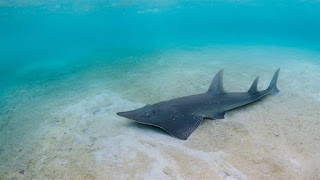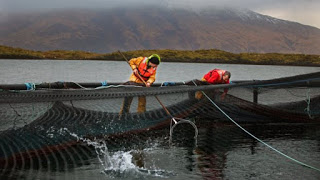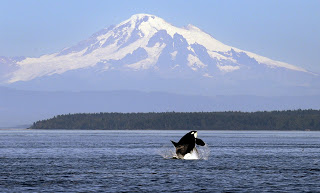Sea Save will Fight for More Shark Protection – CITES 2019, Climate Change Could Double Beer Prices, World’s Longest Vessel to be a Fish Farm, Hurricane Michael Threatens Sea Turtle Populations And More…
Currently, twenty commonly traded shark and ray species are listed on CITES Appendix II, but the Sea Save Foundation team is headed to Sri Lanka to fight to protect more. Giant guitarfish, blackchin guitarfish, sharpnose guitarfish and all members of that rest of the family Glaugostegidae as “look-alike” species. Also being considered are wedgefish (Rhynchobatus australiae and Rhynchobatus djiddensis) and the rest of the family, Rhinidae, as look-alike species on Appendix II. Mexico will submit a proposal to consider hortfin mako shark (Isurus oxyrinchus), with the longfin mako (Isurus paucus) protected as a look-alike species
 President Donald Trump recently signed into law a bill that lawmakers have called a point of unity among Republicans and Democrats. The Ketchikan Daily News reports the Save our Seas Act, which Trump signed Thursday, reauthorizes the National Oceanic and Atmospheric Administration’s Marine Debris Program through 2022. The program works to reduce debris through research, prevention, and reduction. The Save our Seas legislation keeps the program going by continuing to authorize $10 million per year for the next five years. The bill also encourages the executive branch to reach out and engage the leaders of countries – located primarily in Asia – that are responsible for much of the sea pollution found around the planet’s oceans.
President Donald Trump recently signed into law a bill that lawmakers have called a point of unity among Republicans and Democrats. The Ketchikan Daily News reports the Save our Seas Act, which Trump signed Thursday, reauthorizes the National Oceanic and Atmospheric Administration’s Marine Debris Program through 2022. The program works to reduce debris through research, prevention, and reduction. The Save our Seas legislation keeps the program going by continuing to authorize $10 million per year for the next five years. The bill also encourages the executive branch to reach out and engage the leaders of countries – located primarily in Asia – that are responsible for much of the sea pollution found around the planet’s oceans.
3. Heat and Drought Could Threaten World Beer Supply
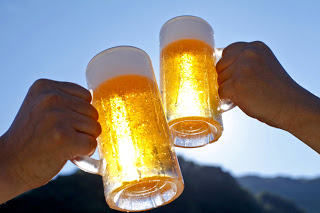
If horrific hurricanes and a new, scarier-than-ever United Nations report don’t change attitudes on climate change, perhaps a new report on barley will. A small international team of scientists considered what the effect of climate change would be for this crop in the next 80 years, and they are raising an alarm they hope will pierce the din of political posturing. They are predicting a beer shortage. In a report in Nature Plants, researchers in China, Britain and the United States say that by the end of the century, drought and heat could hurt barley crops enough to cause intense pain to beer drinkers.
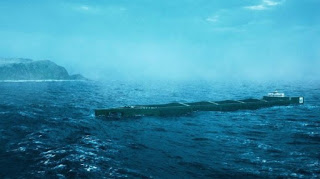 Norwegian aquaculture company Nordlaks is building what may well become the world’s largest vessel by length, a gigantic moored fish farm platform dubbed Havfarm1. In February, Nordlaks signed a contract with Chinese yard CIMC Raffles to build the semi-catamaran design at its yard in Shandong Province. Its hull measures 430 meters long, enough to make it the longest vessel in the world (though not the longest self-propelled vessel). According to Nordlaks spokesman Lars Fredrik Martinussen, the firm is on track to begin operations with Havfarm in the second quarter of 2020.
Norwegian aquaculture company Nordlaks is building what may well become the world’s largest vessel by length, a gigantic moored fish farm platform dubbed Havfarm1. In February, Nordlaks signed a contract with Chinese yard CIMC Raffles to build the semi-catamaran design at its yard in Shandong Province. Its hull measures 430 meters long, enough to make it the longest vessel in the world (though not the longest self-propelled vessel). According to Nordlaks spokesman Lars Fredrik Martinussen, the firm is on track to begin operations with Havfarm in the second quarter of 2020.
5. Atlantic Salmon Production Reaches Record High in Scotland
The production of Atlantic salmon in Scottish fish farms rose to a record high last year, according to new figures. The Scottish Fish Farm Production Survey 2017 was published by Marine Scotland Science.It said 189,707 tonnes of Atlantic salmon was produced last year, an increase of 16.5% on the previous year. The report also suggested the value of salmon produced across Scotland had risen above £1bn for the first time. The figure represented a 37% increase on the previous year.
6. Aggressive, Territorial Fish can Help Boost Coral Reef Recovery
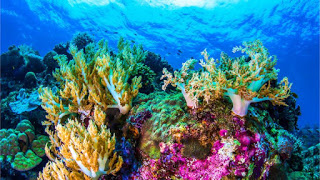 Coral reefs around the world have been experiencing mass bleaching events and are dying off at an unprecedented rate. Famously, the Great Barrier Reef experienced catastrophic back to back bleaching events in 2016 and 2017. Scientists are now working to predict how the world’s corals will respond to warming ocean temperatures caused by climate change. While the future doesn’t look promising, research has shown that corals can adapt to environmental changes and recover. ear.
Coral reefs around the world have been experiencing mass bleaching events and are dying off at an unprecedented rate. Famously, the Great Barrier Reef experienced catastrophic back to back bleaching events in 2016 and 2017. Scientists are now working to predict how the world’s corals will respond to warming ocean temperatures caused by climate change. While the future doesn’t look promising, research has shown that corals can adapt to environmental changes and recover. ear.
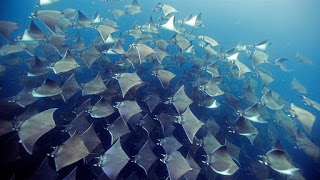 In 1993, the United Nations Convention on Biological Diversity (CBD) entered into force, ushering in a new era of global conservation. Recognizing the critical links between natural resources and countries’ development, the agreement aims to maintain the diversity of the world’s species and ecosystems and ensure that commercial and other use of genetic resources is fair, equitable, and sustainable. Since 2011, parties to the agreement have worked toward a set of actions known as the Aichi Biodiversity Targets, which provide a framework for international conservation efforts.
In 1993, the United Nations Convention on Biological Diversity (CBD) entered into force, ushering in a new era of global conservation. Recognizing the critical links between natural resources and countries’ development, the agreement aims to maintain the diversity of the world’s species and ecosystems and ensure that commercial and other use of genetic resources is fair, equitable, and sustainable. Since 2011, parties to the agreement have worked toward a set of actions known as the Aichi Biodiversity Targets, which provide a framework for international conservation efforts. 8. With Right Whales at Risk of Extinction, Regulators Consider Drastic Action that Could Affect Lobstermen
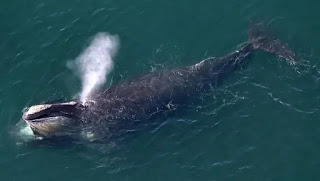 With North Atlantic right whales increasingly at risk of extinction, federal regulators are considering drastic protection measures that could have sweeping consequences for the region’s lucrative lobster industry. The species is in dangerous decline, with a record 17 right whale deaths and no recorded births last year, and entanglements in fishing gear are believed to be the leading cause of premature deaths. Three have died in US waters this year, including one 35-foot-long whale found Sunday about 100 miles east of Nantucket, federal officials said.
With North Atlantic right whales increasingly at risk of extinction, federal regulators are considering drastic protection measures that could have sweeping consequences for the region’s lucrative lobster industry. The species is in dangerous decline, with a record 17 right whale deaths and no recorded births last year, and entanglements in fishing gear are believed to be the leading cause of premature deaths. Three have died in US waters this year, including one 35-foot-long whale found Sunday about 100 miles east of Nantucket, federal officials said.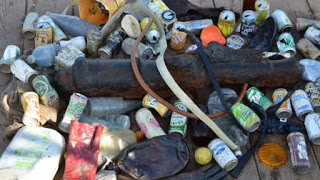 Plastic pollution has been found on historical shipwrecks in coastal waters. Divers from the Marine Archaeology Sea Trust found a “surprisingly large quantity” of rubbish on HMS Invincible’s wreck site in Portsmouth Harbour. Kevin Stratford, from the trust, said such wrecks, proud of the seabed, act as “accumulation points” for rubbish. He said it could potentially affect the aquatic wildlife colonizing wrecks. This is especially dangerous because shipwrecks have become new gathering places for fish and the fact that plastic is accumulating there also could increase the concentration of plastics being incorporated into the tissue of these fish.
Plastic pollution has been found on historical shipwrecks in coastal waters. Divers from the Marine Archaeology Sea Trust found a “surprisingly large quantity” of rubbish on HMS Invincible’s wreck site in Portsmouth Harbour. Kevin Stratford, from the trust, said such wrecks, proud of the seabed, act as “accumulation points” for rubbish. He said it could potentially affect the aquatic wildlife colonizing wrecks. This is especially dangerous because shipwrecks have become new gathering places for fish and the fact that plastic is accumulating there also could increase the concentration of plastics being incorporated into the tissue of these fish.
 The young hawksbill turtle was accidentally caught in a net in the Indian Ocean off Kenya’s coast. The fisherman called Local Ocean Conservation, a nonprofit based in the town of Watamu that is the only turtle rescue and rehabilitation center on the East African seaboard. The hawksbill, critically endangered in this region, was a mere seven pounds; adults can weigh up to 160 pounds.
The young hawksbill turtle was accidentally caught in a net in the Indian Ocean off Kenya’s coast. The fisherman called Local Ocean Conservation, a nonprofit based in the town of Watamu that is the only turtle rescue and rehabilitation center on the East African seaboard. The hawksbill, critically endangered in this region, was a mere seven pounds; adults can weigh up to 160 pounds.Read more from The New York Times
 When Hurricane Michael struck Florida’s Panhandle, it swept away nests of threatened baby loggerhead sea turtles hatching along its sandy beaches, already damaged by previous storms and erosion. Scalloped sand has replaced dunes that have been washed away in Alligator Point, one of the most prolific areas for sea turtle nests in Franklin County and the state. “Our dunes were about 8 feet (2.44 meters) high and they’re all gone,” said Allan Feifer, 61, a Franklin County emergency management official, who lives in Bald Point, which was battered by 11.5-foot (3.50-meter) storm surge.
When Hurricane Michael struck Florida’s Panhandle, it swept away nests of threatened baby loggerhead sea turtles hatching along its sandy beaches, already damaged by previous storms and erosion. Scalloped sand has replaced dunes that have been washed away in Alligator Point, one of the most prolific areas for sea turtle nests in Franklin County and the state. “Our dunes were about 8 feet (2.44 meters) high and they’re all gone,” said Allan Feifer, 61, a Franklin County emergency management official, who lives in Bald Point, which was battered by 11.5-foot (3.50-meter) storm surge.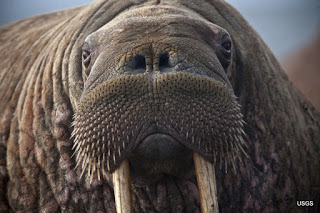
Given a choice between giving birth on land or sea ice, Pacific walrus mothers most often choose ice. Likewise, they prefer sea ice for molting, mating, nursing and resting between dives for food. Trouble is, as the century progresses, there’s going to be far less ice around. How well walruses cope with less sea ice is at the heart of a legal fight over whether walruses should be listed as a threatened species, giving them an added protection against human encroachments. The federal government in 2008 listed polar bears as a threatened species because of diminished sea ice brought on by climate warming. That year the Center for Biological Diversity petitioned to do the same for walruses.
The spotted seal is critically endangered in Iceland, according to the Icelandic Institute of Natural History’s newest Red List. RÚV reported first. Spotted seals numbered 7,600 in 2016, down from around 33,000 when monitoring of their stocks began in 1980. The animals’ numbers thus decreased around 77% over the 35-year period. If seal numbers continue to decrease at the same rate, they will decrease by 84% over the next 45 years, a time period of three generations for the animals.
The gut punches came in quick succession this summer in the Pacific Northwest, a place where it seems like everyone is, or knows, a killer whale fan. First, video crews captured an orca known as J35 carrying and coaxing her stillborn calf for 17 anguishing days, a mother seemingly unwilling to accept her child’s death. A few weeks later, a rambunctious young orca — known for her frequent breaching in Puget Sound — went missing. The whale nicknamed Scarlet was soon declared dead, at just 4 years old.
15. Tasmania Penguin Deaths: Dozens Killed in Suspected Dog Attack
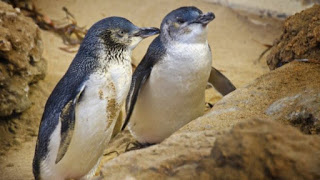 Wildlife officials are investigating a suspected dog attack in Tasmania, after 58 penguins were found mauled to death. A member of the public alerted rangers to the dozens of penguin bodies strewn across a beach on the north coast of Australia’s island state. This is the second dog attack in months on the little penguins – the smallest penguin species – according to reports. Authorities said dog owners must take responsibility for their pets and earlier warned of hefty fines.
Wildlife officials are investigating a suspected dog attack in Tasmania, after 58 penguins were found mauled to death. A member of the public alerted rangers to the dozens of penguin bodies strewn across a beach on the north coast of Australia’s island state. This is the second dog attack in months on the little penguins – the smallest penguin species – according to reports. Authorities said dog owners must take responsibility for their pets and earlier warned of hefty fines.
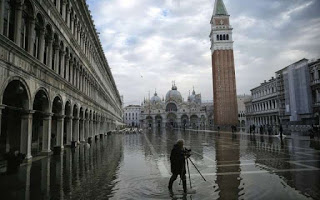 From Venice and the tower of Pisa to the medieval city of Rhodes, dozens of UNESCO World Heritage sites in the Mediterranean basin are deeply threatened by rising sea levels, researchers warned Tuesday. All but two of 49 UN-recognised icons of human civilization rimming the Mediterranean Sea risk being damaged by the rising watermark, soil erosion, or both, with few options for protecting most of them, they reported in the scientific journal Nature Communications. Venice and its lagoon, the Patriarchal Basilica of Aquileia, and Ferrera, City of the Renaissance, and its Po Delta, all hit the top of a risk scale devised for the study.
From Venice and the tower of Pisa to the medieval city of Rhodes, dozens of UNESCO World Heritage sites in the Mediterranean basin are deeply threatened by rising sea levels, researchers warned Tuesday. All but two of 49 UN-recognised icons of human civilization rimming the Mediterranean Sea risk being damaged by the rising watermark, soil erosion, or both, with few options for protecting most of them, they reported in the scientific journal Nature Communications. Venice and its lagoon, the Patriarchal Basilica of Aquileia, and Ferrera, City of the Renaissance, and its Po Delta, all hit the top of a risk scale devised for the study.
17. Trump: My ‘Natural Instinct for Science’ Tells Me Climate Science Is Wrong
Critical Statement: “My uncle was a great professor at MIT for many years. Dr. John Trump,” he said. “And I didn’t talk to him about this particular subject, but I have a natural instinct for science, and I will say that you have scientists on both sides of the picture.”

